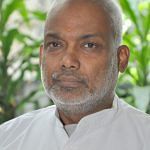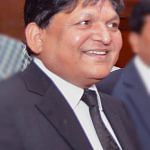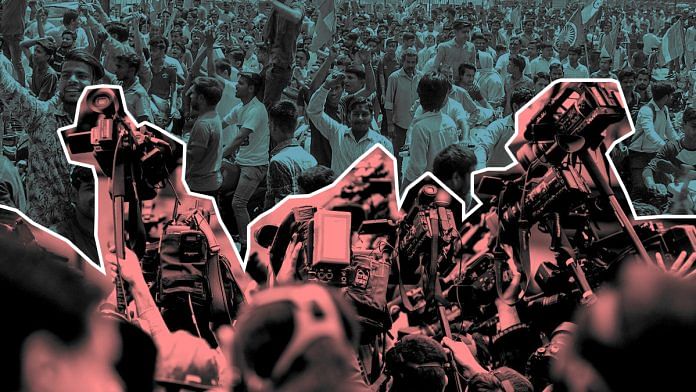Complying with the Bombay High Court order, the I&B ministry has asked Indian media not to use the word “Dalit” and instead stick to the constitutional term “Scheduled Caste” while referring to the people belonging to the community.
ThePrint asks- Does I&B Ministry notice to not use ‘Dalit’ stifle political identity or end caste-marker?
Any move by govt that looks beyond caste politics should be welcomed
 Raghav Pandey
Raghav Pandey
Assistant Professor of Law, Maharashtra National Law University
Since the advisory by the information and broadcasting ministry to media houses to stop using the word ‘Dalit’ is in pursuance to a judicial mandate by the Bombay High Court, it is yet not clear if it is a policy position of the government.
This inter alia also means that the judiciary in the country should stop taking policy positions and mandating the executive in a domain which is exclusively not meant for the judiciary.
However, such a position should be welcomed instead of being eyed with suspicion. The country needs integrative narratives rather than ones which amplify the fissures of the society.
In an ideal world, there shouldn’t be any term to denote specific castes. Therefore, even the term ‘Scheduled Castes’ shouldn’t be used in a way which perpetuates existing caste identities, instead, the policy measures of the political class should only be about gradually dissolving caste identities.
Hence, this move is certainly in the right direction, but of course not the best possible.
The governments in this country have always sought to propagate a situation where people have competed to be more backward or ‘depressed’ than the others to avail the incidental governmental benefits. The executive hasn’t had a problem with this because caste groups have functioned as pre-identified vote banks. This is certainly not sustainable in the long run if the health of the society and the nation are of any consideration.
Therefore, any move by the government that looks beyond the existing caste politics should only be embraced.
Will we stop referring to Brahmins by their caste name?
 D. Shyam Babu
D. Shyam Babu
Senior fellow, Centre for Policy Research
The Dalit community was referred to as a “Schedule Caste” by the British. “Harijan” was another name given to them by Mahatma Gandhi. But they prefer the term “Dalit”. Why should that bother anyone? Of course, this is an act of stifling their expression of political identity. Tomorrow, will we stop referring to Brahmins by that name? We wouldn’t. Why this move against using the term ‘Dalit’ to identify the community? When it is acceptable to them, it should be acceptable to everyone.
I blame the higher judiciary for the entire fiasco. It’s not doing what it should to ensure control over the lower courts. Back in 2004, a frivolous allegation was made against former President A.P.J. Abdul Kalam and warrants were issued against the President. This happens time and again. The judiciary seems to be the only institution where individuals can get away without any accountability whatsoever. The I&B ministry only took directions from the higher court—they aren’t exactly spoilt for choices. That being said, this move does suit the government politically. Instead of challenging the High Court ruling in the Supreme Court, the government obediently accepted the HC ruling without giving it much thought. Thus, the government is to be blamed for this move as well.
Also read: In Dalit outreach mode, BJP to hold national executive at Delhi’s Ambedkar centre
Lack of Dalits on bench might be reason for absence of caste sensitivity in judgment
 Guru Prakash
Guru Prakash
Fellow, India Foundation
‘Dalit’ is an evolutionary term in the social justice movement lexicon: from the scriptural mentions of ‘Chandals’ and ‘Shudras’ to the pre-Independence use of ‘depressed classes’ to ‘Dalits’ in the modern political context. The term has evolved over the time and adapted itself to changing circumstances. In the Marathi language, the word means oppressed and excluded, rightly so, as the community has been subjected to historical suppression. A lot of water has flowed under the bridge since then. As a country, we have seen Dalits occupy the high offices of President, Chief Justice, Governors, Chief Ministers and Vice-Chancellors of different universities. The pace of progress has not been very encouraging, but it is not as dismal as habitual doomsayers would declare.
Reform is undoubtedly an elementary and essential ingredient of evolution. A top-down approach to reforms might be perceived as a patronising imposition on us. Any reform must be initiated in consultation with the stakeholders of the community it affects. Over the last couple of years, the judiciary has been very aggressively acting in a manner which may some perceive to be anti-Dalit. Reservation in promotions, dilution of the SC/ST atrocities act, and so on. Lack of Dalits on the bench might be one of the reasons behind the absence of caste sensitivity.
The recent Bombay High Court order on the usage of the term ‘Dalit’ is a case in point. Dalit as a term is representative of assertion and aspiration at the same time. Dalit Indian Chambers of Commerce and Industry is a conglomerate of more than 5,000 small, medium and big Dalit entrepreneurs in the country. There are a plethora of civil society organisations working for towards Dalit welfare with the term ‘Dalit’ in their names.
Will the Nagpur bench of Bombay High Court presided by a Brahmin judge Justice B.P. Dharmadhikari and a Muslim judge Justice Z.A. Haq decide what might be the collective term for a community? Fair enough. It’s the judiciary but some inclusive mechanism might be considered to develop more comprehensive and all-encompassing results.
We don’t use “Shudra” or “Chandal” anymore, even “Dalit” may disappear
 Dr Sanjay Paswan
Dr Sanjay Paswan
Member, BJP
Every word evolves with time and may even perish when the time comes. Earlier we used to use words such as “Shudra” and “Chandal” for the Dalit community. We don’t anymore. They have grown obsolete. We switched to words like “Harijan” – which is a religious word. Eventually, we started using the phrase “Scheduled Caste”, which is a constitutional word. “Dalit” may also disappear like other words did.
But, the word “Dalit” has a strong history to it. Other words may not bring the same level of assertion with them. We need to be able to find an equally proper word to substitute it with. “Vanchit” would be one such word that I would recommend. But everything needs to happen according to the mandate of the people. As of now, I am in favour of the move by the I&B ministry. But if the people are not happy with it, we can always reconsider the decision. That being said, we must continue looking for words that are as assertive as “Dalit” and can replace it.
Govt wants to stifle Dalit consciousness
 Rahul Sonpimple
Rahul Sonpimple
Convener, BIRSA Ambedkar Phule Student Association (BAPSA)
I fail to understand this move by the government. The word “Dalit” didn’t come from any political party. It has emerged from the community itself. There is no alternative to the word. “Harijan” is a problematic term—it is effectively submitting to the caste system. Dalit, on the other hand, carries connotations of assertion and reclamation. “Scheduled Caste” is nothing but a constitutional and legal category. Dalits don’t refer to themselves as “Scheduled Castes”—we use the word Dalits.
This is purely a move by the government to stifle Dalit consciousness. When Dalits sitting in their homes watch news about atrocities on Dalits, they start associating themselves with the word “Dalit”. This helps increase Dalit consciousness. But the government is hell-bent on putting an end to this consciousness. Will the government ever ask Brahmins to stop using the word to identify themselves? When people hear about “Dalit poets”, “Dalit activists” it scares them. We need to resist this stifling. It’s up to us to use the word we identify with the most.
Govt is fighting back as it fears the social power of Dalits
 Chandra Bhan Prasad
Chandra Bhan Prasad
Dalit ideologue
In May 1972, for the first time, ‘untouchables’ rechristened themselves as Dalits. Led by Namdeo Dhasal, a legend in his own lifetime, the term ‘Dalit’ rode a panther: the Dalit Panther came into being. Also, in a first, the Dalit movement sprung up with aggression. It didn’t just mean resistance. Nor was it about seeking justice, or prayers for a livelihood. This was inspired by the Black Panther Party of the US that deployed aggression to confront racism. The Black Panther Party members would be armed to confront uncalled police violence against Blacks.
With panthers on their flags, Dhasal’s men, women, and even children walked on the roads of Bombay with a new body language. In a city known for its morchas, Dalit Panthers redefined street protests. Dalits, for the first time, were feared. A generation of caste supremacists in Maharashtra grew up fearing their own shadows because the beasts inside them now faced the panther.
This new Dalit identity confronted Marathi literature and Dalit literature was born. Dalit politics followed. With the rise of the Dalit middle-class, Dalits have spread globally. This idea has ignited the Dalit self-esteem.
As one singular caste identity, Dalits are the most powerful social force in the country. Dalits are now feared. Not surprised that the government is fighting back as the government itself is not autonomous of the caste order. In that sense, its battle between Dalits and the caste order.
Compiled by Fatima Khan, journalist at ThePrint. You can follow her on twitter @khanthefatima.



